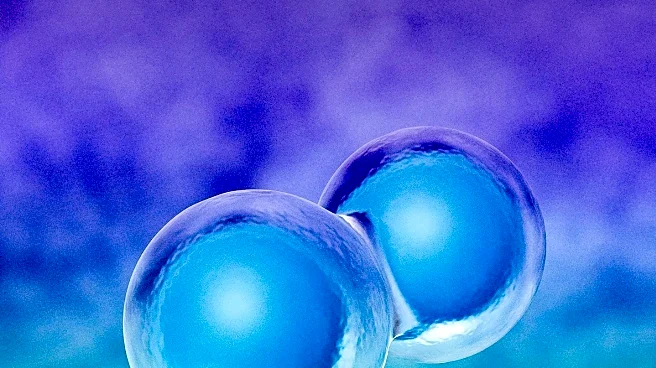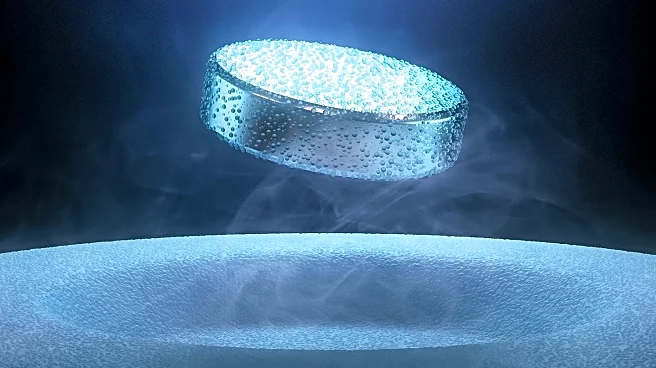What's Happening?
Researchers at the Institute for Bioengineering of Catalonia (IBEC) have successfully captured a real-time video of a human embryo implanting in a laboratory model of a uterus. This groundbreaking study, published in the journal Science Advances, utilized a gel made of proteins found in uterine tissue, including collagen, to simulate the uterine environment. Early-stage embryos, donated by couples undergoing in vitro fertilization (IVF), were placed in this gel, allowing researchers to observe the invasive process of implantation. The study revealed that human embryos exert considerable force during implantation, a process that involves the embryo burrowing into the uterus and reorganizing tissues. This research provides a detailed view of the mechanics of embryo implantation, which is crucial for understanding fertility and improving IVF outcomes.
Why It's Important?
The ability to observe human embryo implantation in real-time is a significant advancement in reproductive health research. Implantation failure is a major cause of infertility, accounting for 60% of miscarriages. By understanding the forces and processes involved in embryo implantation, researchers can potentially improve IVF techniques, leading to higher success rates for couples experiencing infertility. The study also highlights the role of uterine contractions in successful implantation, suggesting that there may be an optimal frequency range for these contractions. This insight could lead to new strategies for enhancing implantation rates in IVF procedures, offering hope to many individuals seeking fertility treatments.
What's Next?
Future research will likely focus on further understanding the role of uterine contractions in embryo implantation. The study suggests that contractions occurring in vivo may influence implantation success, and researchers aim to explore this aspect further. Additionally, the findings may prompt the development of new IVF protocols that optimize uterine conditions for implantation. As the research progresses, it could lead to improved fertility treatments and a better understanding of the complex interactions between embryos and the uterine environment.
Beyond the Headlines
The study opens up discussions on the ethical implications of manipulating human embryos in laboratory settings. As researchers gain more control over the implantation process, questions about the boundaries of scientific intervention in human reproduction may arise. Additionally, the research could influence legal definitions of human embryos, as understanding their development becomes more precise. These discussions are crucial as science continues to advance in the field of reproductive health.












